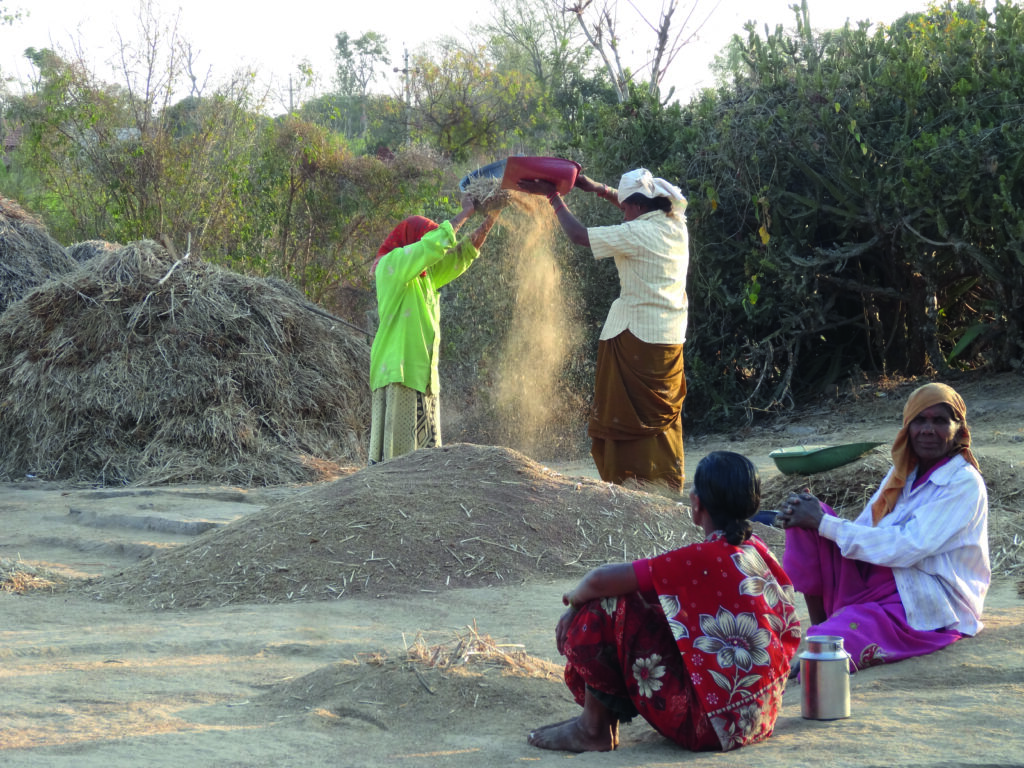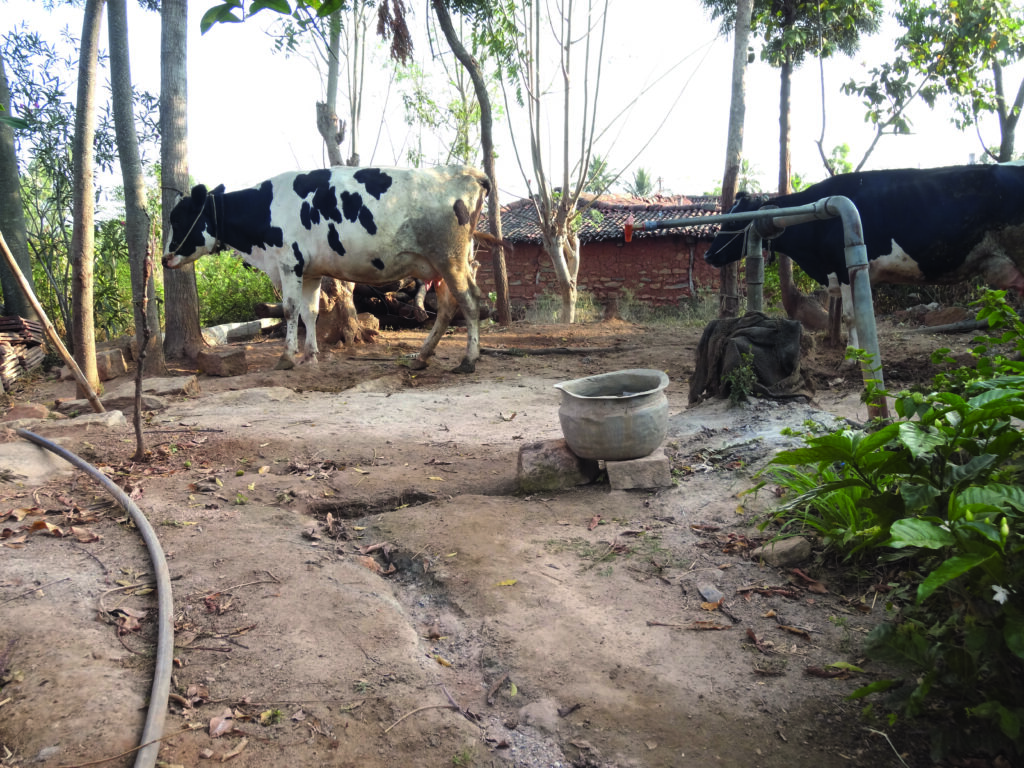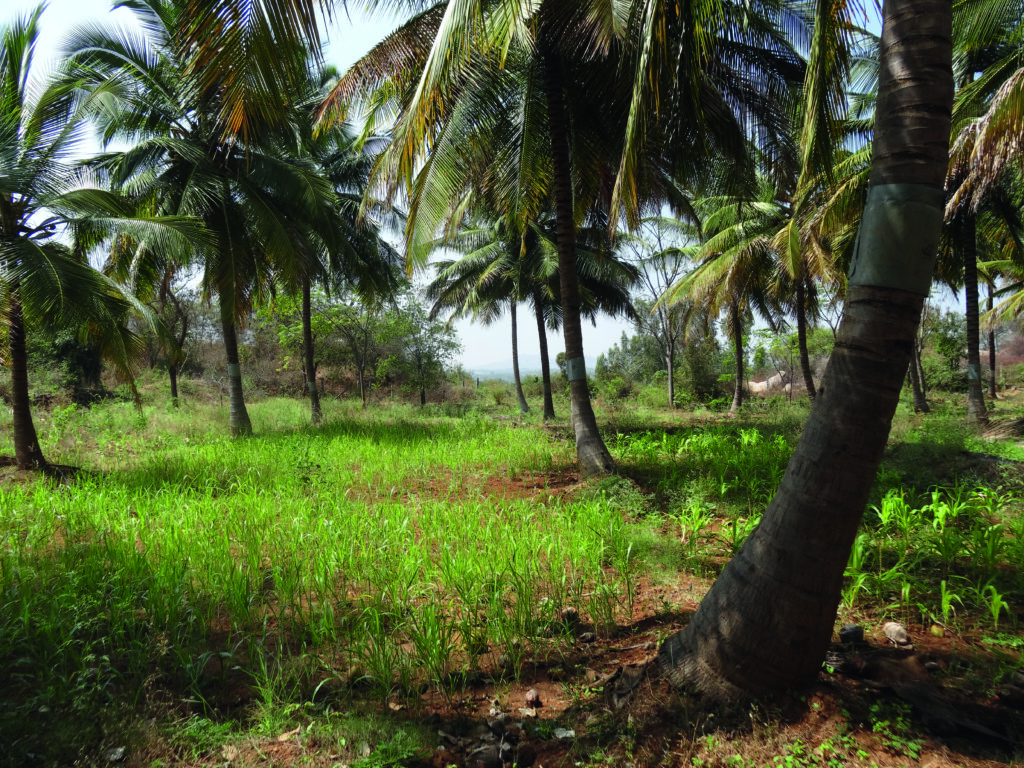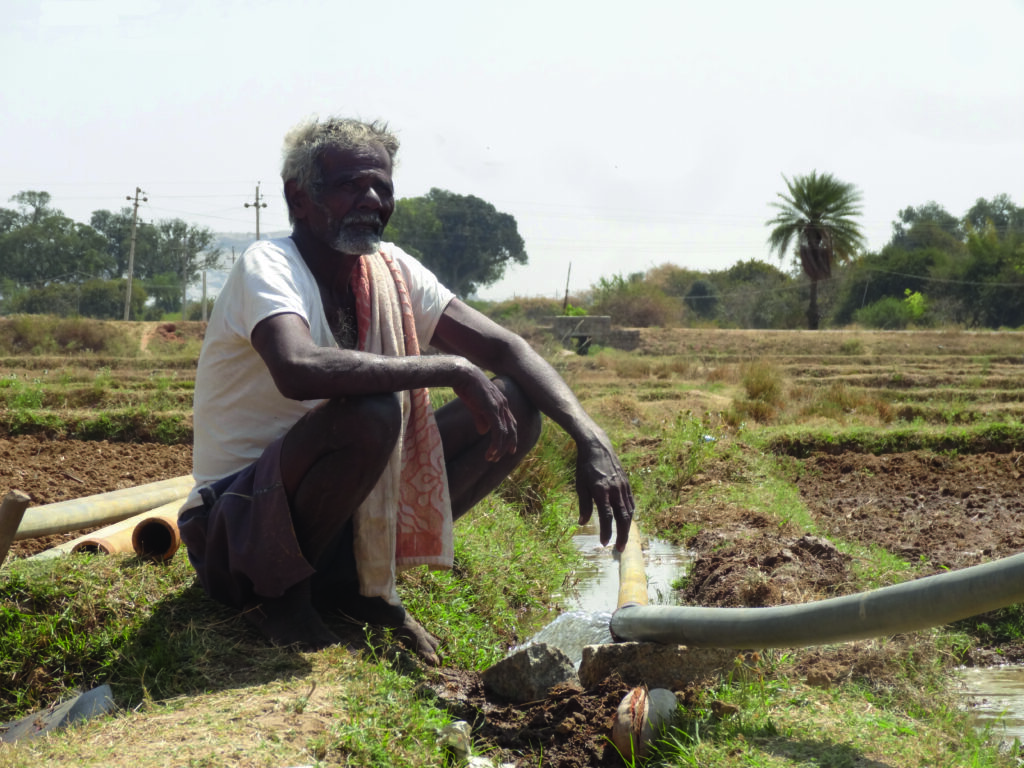Fueling Indian Agriculture – Water, Subsidies and a Lot of Debt
The link between food production and water use is direct and controversial: many say that agriculture, responsible for 87% of all freshwater withdrawals, should be more efficient in using this resource to meet the increasing demand for food, while others point to the fact that irrigation will have to grow in the future if we want to feed the planet.
When assessing the challenges of the future, it is important to keep an eye on our history. The world population is expected to grow exponentially, reaching a peak of 8-10 billion people by 2050. The population growth rate in 1963 reached a peak of 2.19%, at a time when biological immunization drastically reduced mortality. In India, the population grew from 360 million in 1950 to 1 billion in 2000. The main challenge for policy-makers at that time was to provide enough food to the Indian population, at any costs.
The main reason behind government support for the “Green Revolution” throughout half century was the idea that technological progress could lead to an increase in agricultural output. Three main problems were targeted: a reform in the distribution of land, the mechanization of the sector, and the introduction of high yielding varieties of crops. Those farmers who could afford the machineries and the seeds saw an increase of 300% in their production, but, even after the initial investment, the costs for running this agricultural model would multiply. Machines need fuel to run and often need repairing, and high yields requires constant purchases of inputs, such as seeds, fertilizers and pesticides. Farmers that could make a profit while meeting the extra costs imposed by modernization had the capital to invest in more land, more machines and better inputs, to the detriment of poorer farmers left without adequate access to resources.

Enter Nitrogen
The introduction of high yielding varieties in fact required an increased use of chemical fertilizers and irrigation, which are not equally available across India. The government’s attempts to boost the availability of water and nitrogen fertilizers all across the country did not solve this problem, but rather exacerbated it and created new ones. Through the use of subsidies and extension services, the Indian government opened the market for fertilizer producers, and granted them a return of 12% on their investment since 1977. The scheme in place favors the production of nitrogen, making India the largest producer of urea (which is used as a nitrogen based fertilizer) on the planet. The boost to the fertilizer Industry enhanced the increase in soil productivity needed to provide enough food for the growing population. However, the overuse of nitrogen for agricultural purposes created an unprecedented nutrient imbalance in Indian soils.
The overuse of nitrogen for agricultural purposes created an unprecedented nutrient imbalance in Indian soils, creating the conditions for environmental degradation and reduced crop productivity.
Before the introduction of chemical fertilizers, India used to have nitrogen poor soil, while today the average nitrogen surplus is of 54 Kg/ha. This figure is remarkably high compared to EU countries where the average is 31 Kg/ha, and the over-use of fertilizers constitutes a hazard for several ecological and biogeochemical processes. The regional inventory of soil nitrogen balance conducted in 2000-2001 found that the quantity of nitrogen fertilizer applied in India raised from 0.065 in the 1950s to 11.31 million tons. Over-application of nitrogen is critical in many parts of India, where soil acidification and soil hummus depletion are accelerated by synthetic nitrogen. Fertilizer subsidies are endangering the health of Indian soils, and they constitute the biggest expenditure in the federal budget after the subsidies for food.

Groundwater Resources
However, the biggest threat comes from the policies promoting irrigation and groundwater extraction. The Green Revolution can be seen as a ‘success story’ in regions sharing one common characteristic: assured water supplies and control over them. States like Punjab, Haryana and western Uttar Pradesh became the agricultural basket of India, and it was thanks to the construction of dams collecting surface and rain water that farmers had access to this precious resource. On the other hand, arid and semi-arid regions could not benefit from a reliable source of water, other than groundwater resources. In order to promote the Green Revolution model, it was necessary for the government to make groundwater resources accessible to the farmers, otherwise left with underperforming seeds and the debts contracted to afford the investments. For this reason, states like Andhra Pradesh started implementing support policies for pumping groundwater for agricultural purposes, by granting free electricity (or at a flat rate) to run the tube wells operated by the farms. This scheme is now present all across India, even if it creates a distortion in the agricultural sector with terrible consequences. Over the years, India has become the largest consumer of groundwater resources, extracting 250 km3 of water per year, of which 90% is used for agriculture. In most of the country, extraction rate exceeded the recharge capacity of underground reservoirs, making India the country hit the worst by groundwater depletion as found by NASA.
Over-extraction of groundwater is a plague in all the regions that cannot rely on surface or rain water for agricultural purposes. This is due to domestic consumption, industry needs, but particularly because of the inefficient use of water for irrigation purposes. Through subsidies, farmers are incentivized to grow high yielding crops that can only perform well under a high use of inputs. Being the losers of the Green Revolution, small-scale farmers, living at the margin of society and unable to compete with the successful agribusiness, are left with no choice but to use the land and water available to grow crops, mostly for their own consumption. Farms now grow rice or sugarcane in areas far from water bodies and continue to pump water just to keep their paddy fields at their optimal with about 7 cm of standing water. The result is that in the south, west and central India the water table has been decreasing uncontrolled, lowering the level of water by 60 meters in 30% of the regions of southern India and 10% in central and western states. The farmers in these regions not only have to dig deeper, hoping to find water, but in many cases have to depend on unreliable supply of electricity to run their farm and feed their families.

Digging Deeper Debt
In the villages surrounding Bangalore, Karnataka, the farmers suffer from the hazard of groundwater depletion. Many of them are left with dry wells due to the decrease in the water table and are left with no choice but to purchase the water they need to run their farm from neighbors that have the capital to invest in deeper bore wells. Having access to water creates a great opportunity for farmers to earn money, but they often have to face incredible costs to reach the precious aquifers hundreds of meters below their farmland. One farmer interviewed by Revolve had to dig 12 wells before finding a spot over his farm from which he could pump an adequate amount for his crops. Each bore well cost him INR 100,000 (about € 1,500), when the revenues from his agricultural activities are as low as INR 160,000 per year. Modern agriculture in many parts of India means debt for the farmers. Farmers have to bet their savings and livelihood, hoping to find more water to extract; sometimes they even ask the help from priests and diviners to point to the next favorable spot for digging a new well. But even religious guides fail to find the water simply because there is no more, meaning the farm is left with a destiny of drought and debt.
Over the past 20 years, around 300,000 farmers committed suicide because of the inability to repay their debts. Every day, 41 farmers commit suicide, especially in water scarce regions of Karnataka, Andhra Pradesh, Maharastra and Madya Pradesh. In 2010, the Central Government attempted to gather information on the suicide rates of farmers in the country and found that over the 15,963 farmers that committed suicide, 76% where in these states. Debt relief is among the many measures the central and state governments are trying to enact to reduce the burden on farmers’ weak finances. In 2013, the Government of India launched a “Special Livestock and Fisheries” package in order to help farmers diversify their sources of income and decrease their dependency from crops which they cannot irrigate.


(bottom/left) A farmer selects the tomatoes to bring to the local market in Bannikuppe. Photos: Marcello Cappellazzi/ Revolve Media
The shift to livestock production, and especially poultry production, is promoted as the solution to bring farmers out of poverty by government, international agencies and transnational companies alike. In a village close to Bangalore, we met a farmer who started producing chickens for Godrej Agrovet. He provides chicken to the processing plant opened in Bangalore by the company which is owned with a 51% share by the US-based Tyson, a major poultry processor globally (See “Under Contract: Corporate Concentration Breeds Hidden Risks for Chicken Farmers Worldwide” on pages … ). In order to build the chicken house the farmer had to go further in debt, but with the promise of building equity in the long run. Having only shifted his financial exposure from debts contracted to grow crops, to debt contracted to raise chickens, the farmer is now dependent on the variable paycheck from the private company rather than from inaccessible water resources.
Over the past 20 years, around 300,000 farmers committed suicide due to the lack of water amd impossible debts.
Government Responses
The role of the government in addressing the crisis of small scale farmers in water scarce regions of India has been ineffective and even detrimental to farmers and the environment. The focus on debt relief only postponed the consequences of falling water levels in the region, and the indirect support to the poultry industry further increased the risks of bankruptcy for the farmers. The Green Revolution assured an adequate production of food to secure the food supply in India, and current policies and practices promoted by the government are still geared towards achieving this goal in the future. But modernization of the agricultural sector cannot achieve this goal automatically. Nutritional security, especially for the rural population, is now ensured through a large use of subsidies: subsidies to purchase inputs to grow crops, to diversify the sources of income, to purchase food grains or to repay the debt contracted by the farmers. The Indian agricultural sector thus is far from being a sustainable production system.
The Indian agricultural sector is far from being a sustainable production system.
The policy framework created to support food production in India throughout the years made India a food sovereign country, but it also had negative effects on the environment and on the livelihoods of farmers. The subsidies naturally benefit large-scale farms that, by nature, use more water and fertilizers. Subsistence farmers are pushed without any choice to buy seeds they cannot afford, spread chemicals that poison their land and waste precious water that is less and less available. If we look at our past, it is clear that to sustain human populations in the future we have to move beyond the solutions proposed by the Green Revolution. The goal of increasing agricultural productivity must in fact also consider ways reduce the negative impact of over-extraction of groundwater and over-use of nitrogen. Reducing the input dependency of farmers could lead to a more sustainable agricultural sector in India, even though many benefit from an intensive and commercial model of agriculture. The investments in high yielding seeds and improved technologies generated in 2009 revenues of almost €35 billion in rice production and €10 billion for wheat, creating a huge wealth to be distributed among Indian farmers. However, the ones reaping the benefits are the farmers that have capital investments, large farms and adequate access to water, leaving the majority of the rural population in radical poverty. But farmers, either rich or poor, are by far not the biggest winners of the Green Revolution in India. The real money is in fact in the growing market for agricultural inputs, with an estimated seed market of €150 million where only 350 companies operate, and almost €3 billion in subsidies to be distributed among the 121 plants producing fertilizers in India. The Green Revolution may have served the purpose of increasing the agricultural output in India, but it surely also increased the profits of private companies operating in this sector.
The future prospects for the Indian agricultural sector do not envision a more equitable and fairer system to the farmers. On the contrary, private interests still prevail over the goal of lifting the rural population out of poverty. The current political support to livestock production contracts and genetically engineered crops clearly shows that also in the future, Indian agriculture will generate profits for the private corporations that own the agricultural inputs. Farmers are left at the margin of this system, limiting their production options and ability to change. If the world of tomorrow will have to grow enough food to sustain an 8-10 billion population, we must understand that the solution should not be imposed by the industries interested in this expanding market. For our agricultural system to be sustainable, the attention should not only be focused on increasing the productivity of fewer and fewer farms, but it should also recognize the importance of a prosperous rural population capable of managing our precious natural resources.

